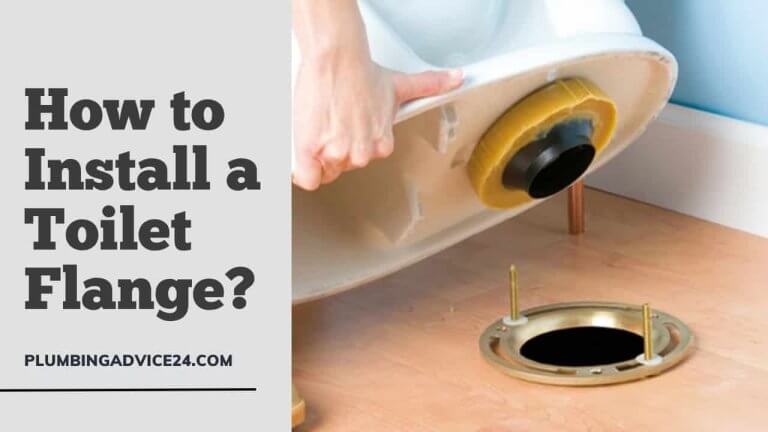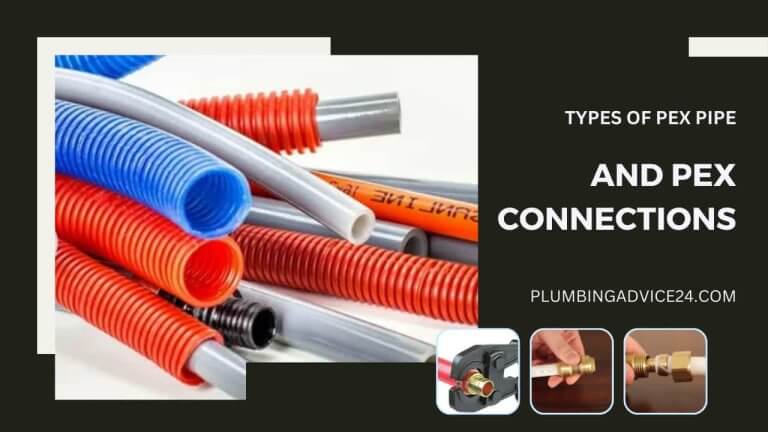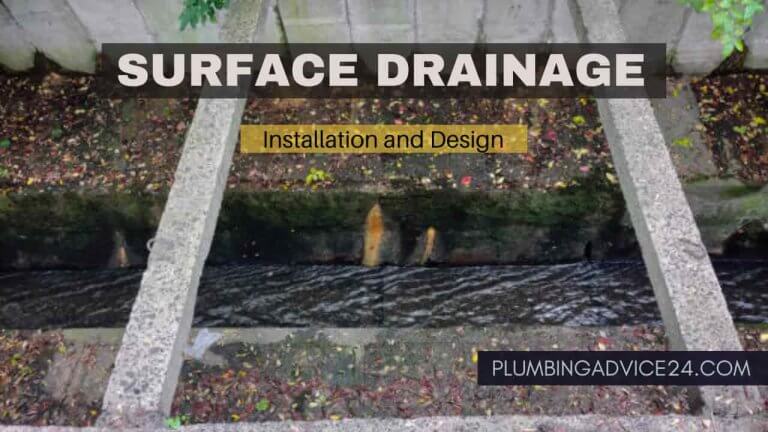Types of Steel Pipes | Stainless Steel Pipe Vs Carbon Steel Pipe
Steel pipes are long hollow tubes used in various places for various applications. Its versatility makes pipes one of the most widely used products produced by the steel industry. They generally convey liquids that can flow and small solid particles. Due to their high strength, they can also be used in underground water and gas transport through cities or for purposes such as heating, plumbing, etc. Read the article to learn about the types of steel pipes.
How Many Types of Steel Pipe?
Stainless steel pipes and Carbon steel pipes are both types of steel pipes, but the content of the metal elements in them is different, which leads to the characteristics of stainless steel pipes that are more corrosion resistant than carbon steel but have a higher purchase price.
Generally, both types of steel pipes have the same basic elements, iron and carbon. The difference is that carbon steel pipe has an alloy content of less than 10.5%, while stainless steel pipe has a chromium content of 10.5% and above. Also, its essential difference is specific physical characteristics.
Stainless Steel Pipe
Stainless steel pipe is a kind of hollow and longitudinal steel tube. These types of steel pipes are widely used in the oil, chemical, medical, food, light industries, instruments and appliances, structural parts, etc.
Additionally, while twisting and anti-twisting are of equal intensity, stainless steel is lighter and is used in equipment parts and structural projects. Also used for manufacturing all types of conventional weapons, barrels, shells, and so on.
These types of steel pipes are divided into stainless steel seamless and welded pipes. The production process can be divided into the following basic types: hot-rolled, extrusion, cold-circular, hexagon, equilateral triangle, octagon, and other special shapes of stainless steel pipe.
Applications of Stainless Steel Pipe
For tubing and piping applications, Type 304 stainless steel is a common choice because it is highly chemical- and corrosion-resistant. However, Type 304 stainless steel is not compatible in applications where temperatures fall between 800 and 1640 degrees Fahrenheit (F) because it is prone to carbide precipitation due to the material’s .08 percent carbon content limit.
Stainless steel type 304L is used to avoid this problem. Because it has a low carbon content limit, it can be subjected to welding and high-temperature applications.
Following are the stainless steel pipe applications.
- High-pressure stainless steel tubing
- Sanitary tubing
- Stainless mechanical tubing
- Structural and Construction
- Heat exchanger
- Boiler
- Aircraft tubing
- Oil and Gas Industries
- Cracking of petroleum process
- Fluid transmission in plumbing pipes
Advantages of Stainless Steel Pipe
- Stainless steel pipes are highly efficient, and it is possible to use a smaller diameter of pipe made from steel than pipes made from other materials. This can save on the cost of the pipes without sacrificing the flow rate.
- The tensile strength of stainless steel pipes is more than 530 N/mm, which is double that of galvanized pipes, 3-4 times that of copper pipes, and 8-10 times that of PPR pipes. And it has good ductility and hardness, which is convenient for water conservation.
- The heat preservation performance of stainless steel pipe is 24 times that of copper pipe, which reduces the pipe’s heat energy loss, making it suitable for transporting hot water.
- Stainless steel pipes are attractive and look like modern, attractive decor. It is possible to expose the stainless steel pipes inside the building to add to the decorative beauty of the room.
- Stainless steel is strong and protects against damaging factors that can destroy other pipes.
- Stainless steel pipe has a low corrosion rate. The metal will retain its rust-free appearance for many years, even if water is constantly inside the tube. The metal is not likely to dissolve in water.
- Stainless steel pipes are 100 percent recyclable. When the pipes are no longer needed, they can be melted down and turned into other usable pieces of metal in other industries.
- Stainless steel pipes have no corrosion and emission, no distinctive smell or dirt, and no secondary pollution to water quality; best to maintain pure and healthy water quality. They are safe and non-toxic.
Disadvantages of Stainless Steel Pipes
- Stainless steel pipes are expensive. Despite the abundance of stainless steel supplies worldwide, the fabrication processes involved in making stainless steel pipes require specific equipment to produce high-quality results.
- Stainless steel pipes can also be susceptible, especially if they are placed with other stainless steel fittings. Once the base metal pieces of stainless steel pipes are removed, they can be affected by corrosive elements, which will require unpredictable maintenance.
- Difficulty in welding due to its rapid heat dissipation, which can also produce damaged pieces or high scrap costs.
- There are overall insulating costs required, as steel isn’t flame resistant. In high temperatures, steel loses its properties.
- Although stainless steel pipes are easy to clean and maintain, you may need to clean them more often to keep them looking their best.
Related Post : What Is Steel Pipe | How Is Steel Pipe Made | Steel Pipe Applications | Steel Pipe Size And Cost
Carbon Steel Pipe
Carbon steel piping is a durable material made from carbon steel, a steel alloy with iron and carbon. Due to its strength and ability to withstand stress, carbon steel pipe is used in a variety of heavy-duty industries. These types of steel pipes are also called CS pipes.
Carbon steel is a special type of steel that, as the name suggests, has a higher carbon content than other types of steel. Most types of steel have a relatively low carbon content of 0.05% to 0.3%. In comparison, carbon steel has a carbon content of up to 2.5%. Two-and-a-half percent carbon may seem trivial, but it presents many compelling benefits that cannot be found elsewhere.
Carbon steel pipes are divided into two types:
- Hot rolled steel pipe
- Cold rolled steel pipe
1. Hot Rolled Carbon Steel Pipe
Hot-rolled carbon steel pipes are divided into ordinary steel pipes, low and medium-pressure boiler steel pipes, high-pressure boiler steel pipes, alloy steel pipes, stainless steel pipes, cracking process of petroleum pipes, geological steel pipes, and other steel pipes. The hot-rolled seamless tubing usually has an outer diameter greater than 32 mm and a wall thickness of 2.5-75 mm.
2. Cold Rolled Carbon Steel Pipe
Cold-rolled carbon steel pipe is divided into ordinary steel pipe, low and medium-pressure boiler steel pipe, high-pressure boiler steel pipe, alloy steel pipe, stainless steel pipe, petroleum cracking pipe, and other steel pipes, and includes carbon thin-walled steel.
Pipe, alloy thin-walled steel pipe, rust thin-walled steel pipe, special shape steel pipe. Cold-rolled seamless steel pipe can have an outer diameter of up to 6 mm and a wall thickness of up to 0.25 mm.
Applications of Carbon Steel Pipe
Carbon steel piping is most often used in chemical, petrochemical, and oil and gas industry applications. It has the benefits of wide availability, high strength, and a wide variety of connection types and fittings. It is widely used for water, air, and steam systems.
Some of the most common uses of carbon steel piping are as follows:
- Transportation of oil and natural gas
- Boiler
- Condenser Tubes
- Building foundations
- Wastewater transport
- Chemical Industry
- Shipbuilding
- High-pressure applications
- Bollard construction
- Shoring
- Distillers
- OEM applications
Advantages of Carbon Steel Pipe
Carbon steel is often thought of as a cheaper alternative to stainless steel. But with its benefits and advantages, in some cases, this material deserves to be the first choice rather than a second-rate option in selecting piping systems. Perhaps the biggest factor in choosing carbon steel pipe over one grade of stainless steel pipe is its lower cost. Not every application needs to use stainless steel pipe, so why not use the advantages of carbon steel pipe?
The advantages of carbon steel pipe are as follows:
- Carbon steel gives high tensile strength to any material it is made of. It can be bent and stretched into any shape without losing any of its strength. With this characteristic, carbon steel pipes can be made thinner and retain the ability to hold high-pressure fluids.
- Carbon steel piping is a versatile material and easy to manufacture. It can be made in various thicknesses and dimensions. It is also easy to cut and can be bent to fit where needed. It can also be easily attached to joints, valves, and other pipe fittings, making it a cost-effective material.
- Pipes made of carbon steel are safe to work with and are impermeable, eliminating the need for disinfectants to treat other pipes.
- Carbon steel pipes are also excellent for handling refrigerants and some other chemicals. They also perform well in industrial environments with very low pH levels or very high temperatures.
- Carbon steel pipes are non-combustible, making spreading fire in an emergency difficult. And it is shock-resistant, making it ideal for fire, earthquake, and other storm-resistant structures. It is the best material for building houses.
- Carbon steel is also recyclable, making it environmentally friendly.
Disadvantages of Carbon Steel Pipe
Carbon steel is one of the oldest and most widely used steel types in the world. But there are also some disadvantages to choosing carbon steel over conventional steel.
The disadvantages of carbon steel pipes are as follows:
- The hardness of carbon steel pipe is very low. The diameter of fully hardened steel is usually about 15-18 mm when water quenched, while the diameter or thickness of carbon steel is only 6 mm when not quenched, so it will easily deform and crack.
- Carbon steel is difficult to work with because it is so strong. It cannot be easily bent and molded into different shapes, thus limiting its usefulness in certain applications.
- Carbon steel is more susceptible to rust and corrosion than other types of steel. To make steel “stainless,” manufacturers add chromium; the chromium acts as a protective barrier on the steel itself, protecting it from moisture that would otherwise cause rusting. However, carbon steel does not contain chromium, so it can rust when exposed to moisture for long periods of time.
- Complex diameter of 15 ~ 20mm, 20mm diameter larger than parts, carbon steel, after water quenching selection, can not quench the water hardenability even if the entire cross-section can not be guaranteed to obtain consistent mechanical properties. Therefore, large parts require high carbon steel is definitely not applicable.
Related Post : Types of Metal Pipes | Seamless Vs Welded Pipes
What Is SS Pipe?
SS pipe is also called a stainless steel pipe. This pipe is a kind of hollow and longitudinal steel tube. These pipes are widely used in the oil, chemical, medical, food, light industries, instruments and appliances, structural parts, etc.
Does Stainless Steel Rust in Water?
A misconception about stainless steel is that it does not rust or corrode when exposed to water, especially seawater. Stainless steel, in fact, can rust and corrode if exposed continuously over time.
How Long Does Stainless Steel Last?
Stainless steel is a clean, durable, corrosion-resistant material. It is designed in such a way that it has a lifespan of more than 50 years.
How Can I Tell If My Stainless Steel Is 304 or 316?
Aesthetically, there is no difference between 304 and 316 stainless steel; the only way to distinguish between them is to test them chemically. The main difference between the two stainless steel is the addition of molybdenum in 316 Stainless steel.
How Many Stainless Steel Grades Are There?
Stainless steel is generally divided into four different grades:
- Austenitic: The austenitic group includes the most common types of stainless steel.
- Ferritic: Containing anywhere between 10.5% and 30% chromium, ferritic stainless steels typically have a low carbon content of no more than 0.1%.
- Duplex.
- Martensitic.
What Is Carbon Steel Pipe?
Carbon steel piping is a durable material made from carbon steel, a steel alloy with iron and carbon. Because of its strength and ability to withstand stress, carbon steel pipe is used in a variety of heavy-duty industries like infrastructure, ships, distillers, and chemical fertilizer equipment.
What Is Carbon Steel Pipe Used For?
Carbon steel pipe is used for both above- and below-ground services for liquid, gas, and steam services. It is not recommended for use in corrosive services but may be used in caustic services.
Does Carbon Steel Rust Easily?
All carbon steels are susceptible to rust, making them unsuitable for use in a variety of end-use applications. Carbon steel is great if you’re looking for a low-cost metal but is generally unsuitable for high-quality or high-precision manufacturing operations.
Is High Carbon Steel Expensive?
Carbon steels fall into two distinct categories: low-carbon and high-carbon. Low-carbon steel has a lower percentage of carbon content, making it cheaper to produce but also weaker than its equivalent. High-carbon steel is stronger, which makes it more expensive to produce.
Which Is Better, Carbon Steel or Stainless Steel?
Stainless steel has a high chromium content that forms an invisible layer on the steel to prevent corrosion and staining. Carbon steel has a higher carbon content, which gives the steel a lower melting point, greater toughness and durability, and better heat distribution.
If You Liked This Post? So Share It with Your Friends
Suggested Articles:

















